Filter by
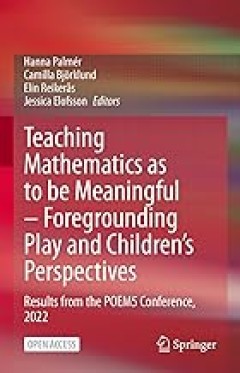
Teaching Mathematics as to be Meaningful – Foregrounding Play and Childrenâ…
This open access book’s theme is Teaching mathematics as to be meaningful – foregrounding children’s play and perspectives. It discusses the relation between teachers, children and mathematical content within the context of play with a particular focus on the framing of these relations within this context, which is an important theme in the debate on whether teaching should be integrated …
- Edition
- -
- ISBN/ISSN
- 978-3-031-37662-7
- Collation
- XII, 260
- Series Title
- -
- Call Number
- -
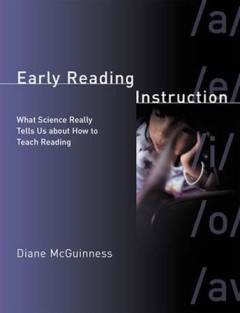
Early reading instruction: What science really tells us about how to teach re…
"A Bradford book."Early Reading Instruction is a comprehensive analysis of the research evidence from early writing systems to computer models of reading. In this book, Diane McGuinness provides an innovative solution to the "reading war"--the century-old debate over the efficacy of phonics (sound-based) versus whole-word (meaning- based) methods. She has developed a prototype--a set of element…
- Edition
- -
- ISBN/ISSN
- 9780262279499
- Collation
- 1 online resource (xviii, 410 pages)
- Series Title
- -
- Call Number
- -
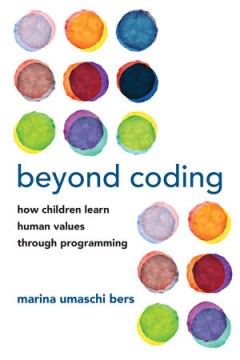
Beyond coding :how children learn human values through programming
"Bers argues that coding should be taught in early childhood and beyond STEM fields, where it is currently isolated from ethical, cultural, and language skills"--OCLC-licensed vendor bibliographic record.
- Edition
- -
- ISBN/ISSN
- 0262368544
- Collation
- 1 online resource.
- Series Title
- -
- Call Number
- -
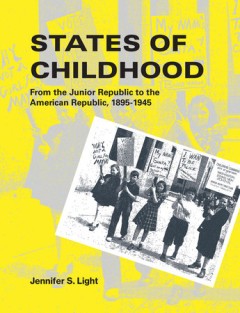
States of Childhood: From the Junior Republic to the American Republic, 1895-…
A number of curious communities sprang up across the United States in the late nineteenth and early twentieth century: simulated cities, states, and nations in which children played the roles of legislators, police officers, bankers, journalists, shopkeepers, and other adults. They performed real work—passing laws, growing food, and constructing buildings, among other tasks—inside virtual w…
- Edition
- -
- ISBN/ISSN
- 9780262358606
- Collation
- -
- Series Title
- -
- Call Number
- -

Victims of Obtrusive Violence Children and Adolescents in Kenya
This volume describes how children’s experience with violence may affect and endanger their education, as well as their physical safety and their general well-being. It includes all forms of physical , psychological and sexual abuse, and neglect against children at home, at school, and in public spaces in two different areas of Kenya (rural and urban), while taking into account its environmen…
- Edition
- -
- ISBN/ISSN
- 978-3-319-22807-5
- Collation
- -
- Series Title
- -
- Call Number
- -
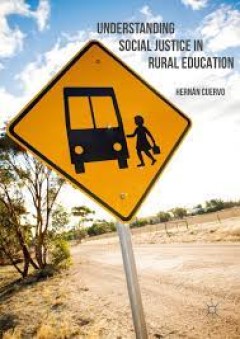
Understanding Social Justice in Rural Education
This book explores what social justice looks like for rural schools in Australia. The author challenges the consensus that sees the distribution of resources as the panacea for the myriad challenges faced by rural schools and argues that the solution to inequality and injustice in rural settings has to take into account other important dimensions of social justice such as recognition and associ…
- Edition
- -
- ISBN/ISSN
- 978-1-137-50515-6
- Collation
- -
- Series Title
- -
- Call Number
- -
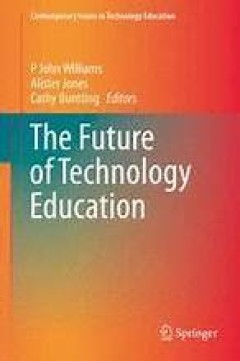
The Future of Technology Education
Twenty-five years ago there was increasing optimism in policy, curriculum and research about the contribution that technology education might make to increased technological literacy in schools and the wider population. That optimism continues, although the status of technology as a learning area remains fragile in many places. This edited book is offered as a platform from which to continue…
- Edition
- 1
- ISBN/ISSN
- 978-981-287-170-1
- Collation
- XII, 281, 7 b/w illustrations, 4 illustrations in colour
- Series Title
- Contemporary Issues in Technology Education
- Call Number
- -
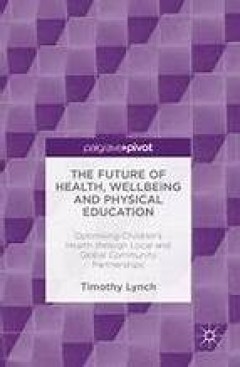
The Future of Health, Wellbeing and Physical Education
This book uses the example of a partnership journey between universities, schools, the local health industry as well as a number of government organisations which worked to ensure the growth of physical education in primary education. The initiative employed the United Nations (UN) ideals as a model and contextualised them within local schools and communities. What began as a pathway seed quick…
- Edition
- 1
- ISBN/ISSN
- 978-3-319-31667-3
- Collation
- XI, 174, 3 b/w illustrations, 3 illustrations in colour
- Series Title
- -
- Call Number
- -
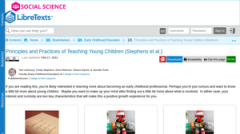
Principles and Practices of Teaching Young Children
If you are reading this, you’re likely interested in learning more about becoming an early childhood professional. Perhaps you’re just curious and want to know a little bit more about young children. Maybe you want to make up your mind after finding out a little bit more about what is involved. In either case, your interest and curiosity are two key characteristics that will make this a pos…
- Edition
- -
- ISBN/ISSN
- -
- Collation
- -
- Series Title
- -
- Call Number
- 370 STE p

Observation and Assessment in Early Childhood Education
To provide children with a safe and nurturing learning environment and to maintain program effectiveness, teachers must incorporate observation, documentation and assessment into their daily routines. To truly be effective, teachers must develop skills and strategies that are grounded in best practices. In this chapter you will be presented with information that highlights how observation a…
- Edition
- -
- ISBN/ISSN
- -
- Collation
- -
- Series Title
- -
- Call Number
- 370 ELA o
 Computer Science, Information & General Works
Computer Science, Information & General Works  Philosophy & Psychology
Philosophy & Psychology  Religion
Religion  Social Sciences
Social Sciences  Language
Language  Pure Science
Pure Science  Applied Sciences
Applied Sciences  Art & Recreation
Art & Recreation  Literature
Literature  History & Geography
History & Geography